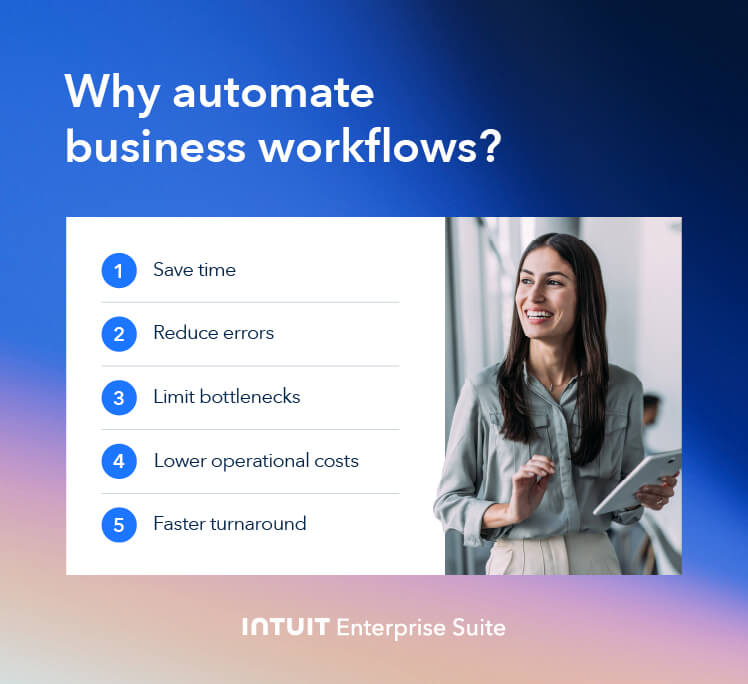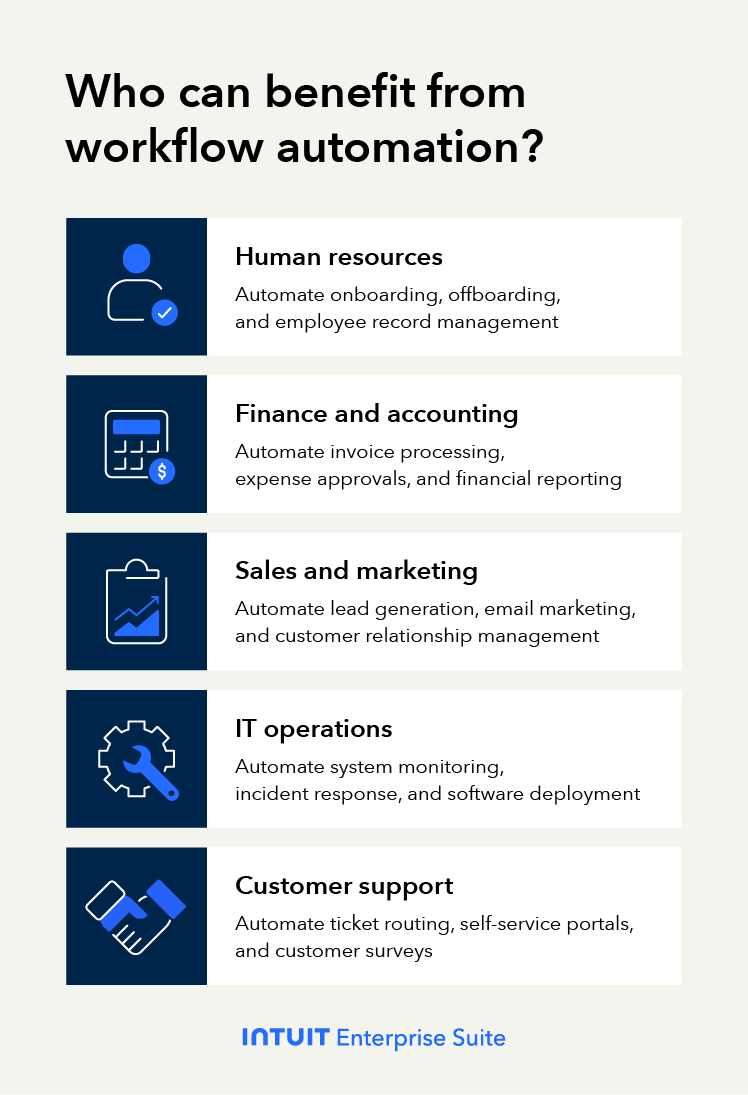Customer service
Automated workflow systems can streamline the customer service experience for both team members and your customers. The process makes it easier to send help tickets to the appropriate agent based on the concerns or requests expressed in the ticket. Depending on the system you use, it can also ensure that customers receive automated email updates for their requests.
Sales
Tracking your customers throughout their buying journeys can be tough, but workflow automation can help take the legwork out of the process. With the right systems, you can create automatic email prompts to encourage customers to return to the site and complete their purchase if they leave items in their cart.
You can also analyze leads and assign them to specific sales representatives based on your reps’ skill sets and knowledge of each lead's interests. For example, you can do all of this within Mailchimp, which can be integrated into Intuit Enterprise Suite.
The goal is to close deals, but the right automated workflows can also improve customers’ buying experiences.
Inventory management
Running out of products when you least expect it and tracking all of your backstock manually can take a major toll on your gross margins and bottom line. Your team has to invest hours in inventory management, and that’s hours they could better serve your business in other ways.
Workflow automation lets you track inventory levels, receive stock level alerts for items that are low, and monitor the replenishment process. And you’ll be able to do it with minimal human oversight.
Social media management
Having a solid social media presence can help keep customers engaged and coming back for more. However, managing different channels, posting different content, and tracking the performance of your posts takes time.
Workflow automation can help analyze customer sentiment to see what your followers think of your brand. It can also help you monitor industry trends and schedule future posts across all of your key platforms automatically.
Accounting
Accounting tasks can take time, and if you’re trying to do everything on your own without the help of a dedicated payroll and accounting team, it can take away from your ability to do other tasks. Accounting automation takes the stress out of those routine tasks.
Once set up, the workflow will run most of your daily accounting efforts on its own without forcing you to oversee every step of the process. Even better, automation can help whether you’re worried about accounting for a single business or have multiple subsidiaries and need to implement multi-entity accounting processes to track the performance of each organization.





 Keep track of your system’s processes and progress as you implement workflow automation. The more information you have, the easier it will be to make changes on the fly so systems can continue working properly.
Keep track of your system’s processes and progress as you implement workflow automation. The more information you have, the easier it will be to make changes on the fly so systems can continue working properly.



